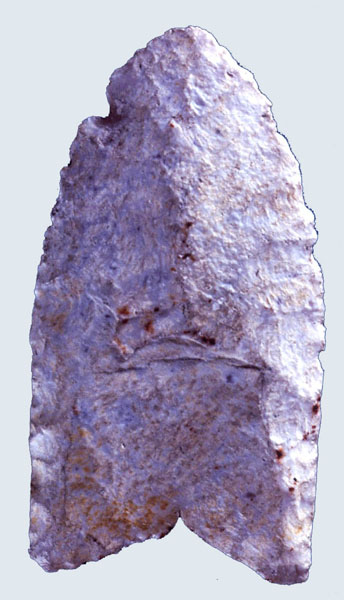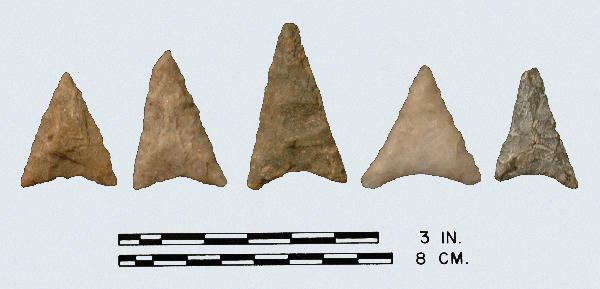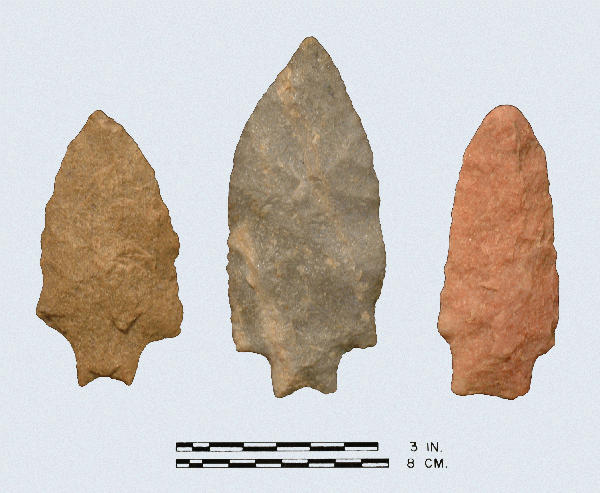
Savannah River: all quartzite.
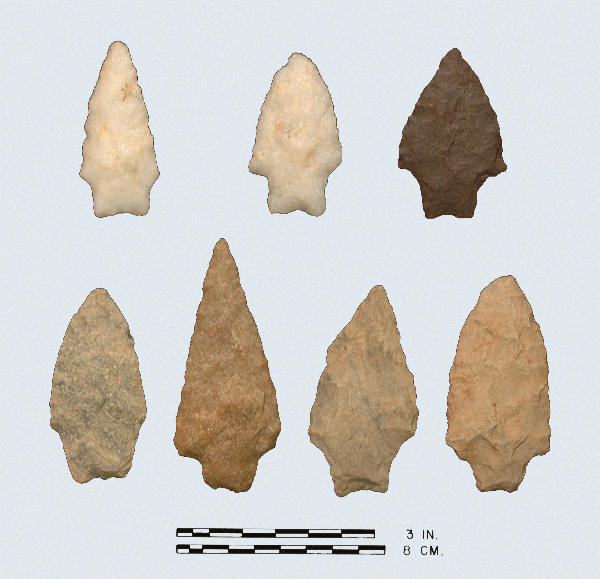
Savannah River: Top Row: quartz, quartz, ferruginous quartzite; Bottom Row: rhyolite, quartzite, rhyolite, tuff.
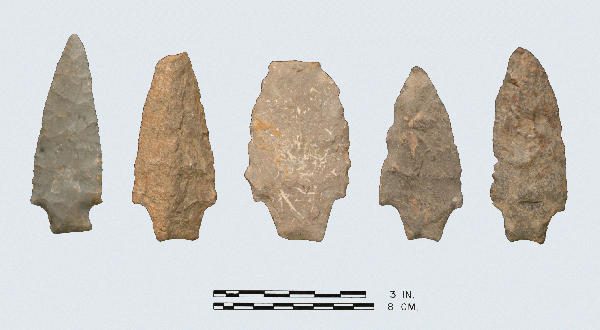
Savannah River: 44RU0014: chert, rest are silicified limestone/dolomite.
Type Square Late-Archaic
Defining Attributes
The Savannah River is a large, heavy, triangular blade point with a broad, square and straight stem.
Chronology
The Savannah River point/knife dates to the Late Archaic period, 2500 to 1200 BCE. The Savannah River point type is found throughout the southeastern United States and is the dominant point of the Late Archaic period.
Description
- Blade: The blade is large, broad, and triangular with rounded sides. Although the blade is large and heavy, it is relatively thin.
- Base: The base is occasionally straight but usually concave. The sides of the stem are always straight and the stem itself is nearly always square. The shoulder is straight and at a right angle to the stem.
- Size: Length ranges from 70 to 170 mm. with an average of 100 mm. Width ranges from 35 to 70 mm. with an average of 50 mm.
- Technique of manufacture: These points were made almost entirely by percussion flaking. Re-touching and pressure flaking was relatively insignificant and served only to smooth out irregularities along the sides and to straighten the stem and shoulder.
Discussion
A Savannah River Narrow Blade variant is recognized by many researchers including McAvoy along the Nottoway River in Virginia. There he dated the variant to 2070 +/-80 BCE at the Slade Site. This variant may be earlier than the wide blade variety and could be related to the earlier Bare Island. In Tennessee a narrow variant of the Savannah River is call Iddins (Chapman 1981) and dates to 1500 BCE.
Defined in Literature
Coe (1964) discusses the Savannah River type found at the Doerschuk Site in the Piedmont of North Carolina. Coe noted that this type is recognized in many areas of the eastern United States. The first detailed description was published by William Claflin, Jr. in 1931 as a result of work on Stallings Island in the Savannah River.
References

